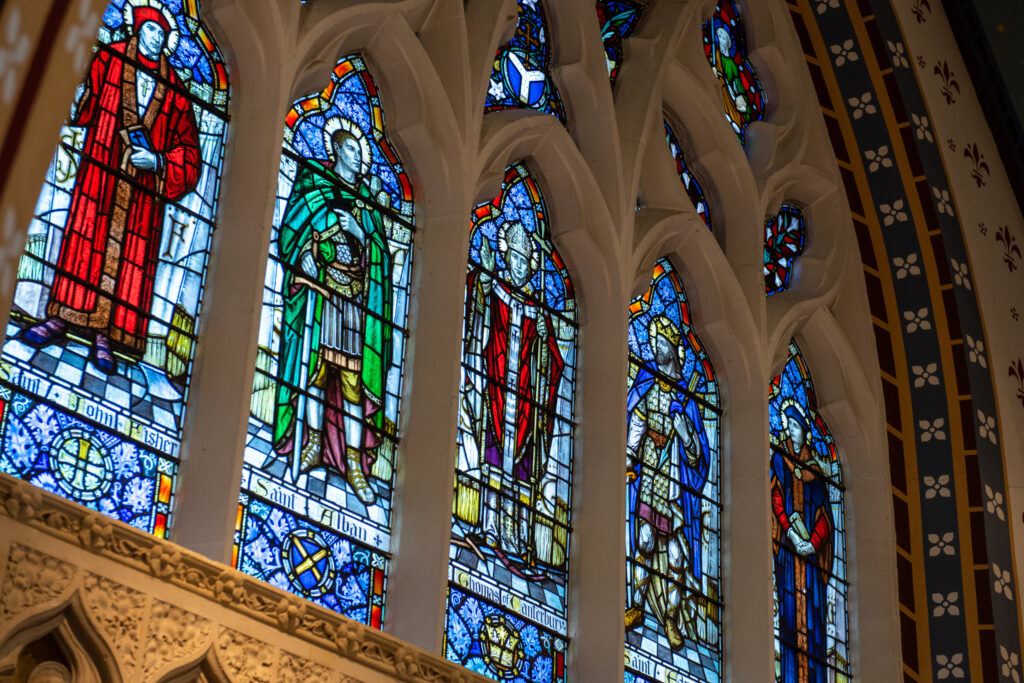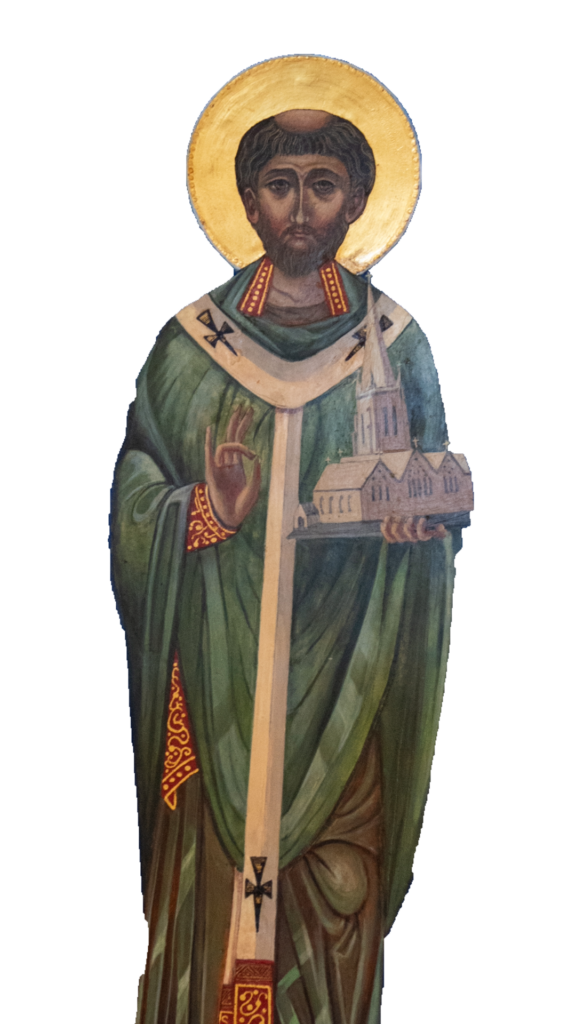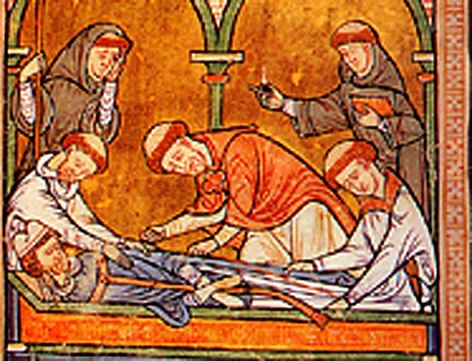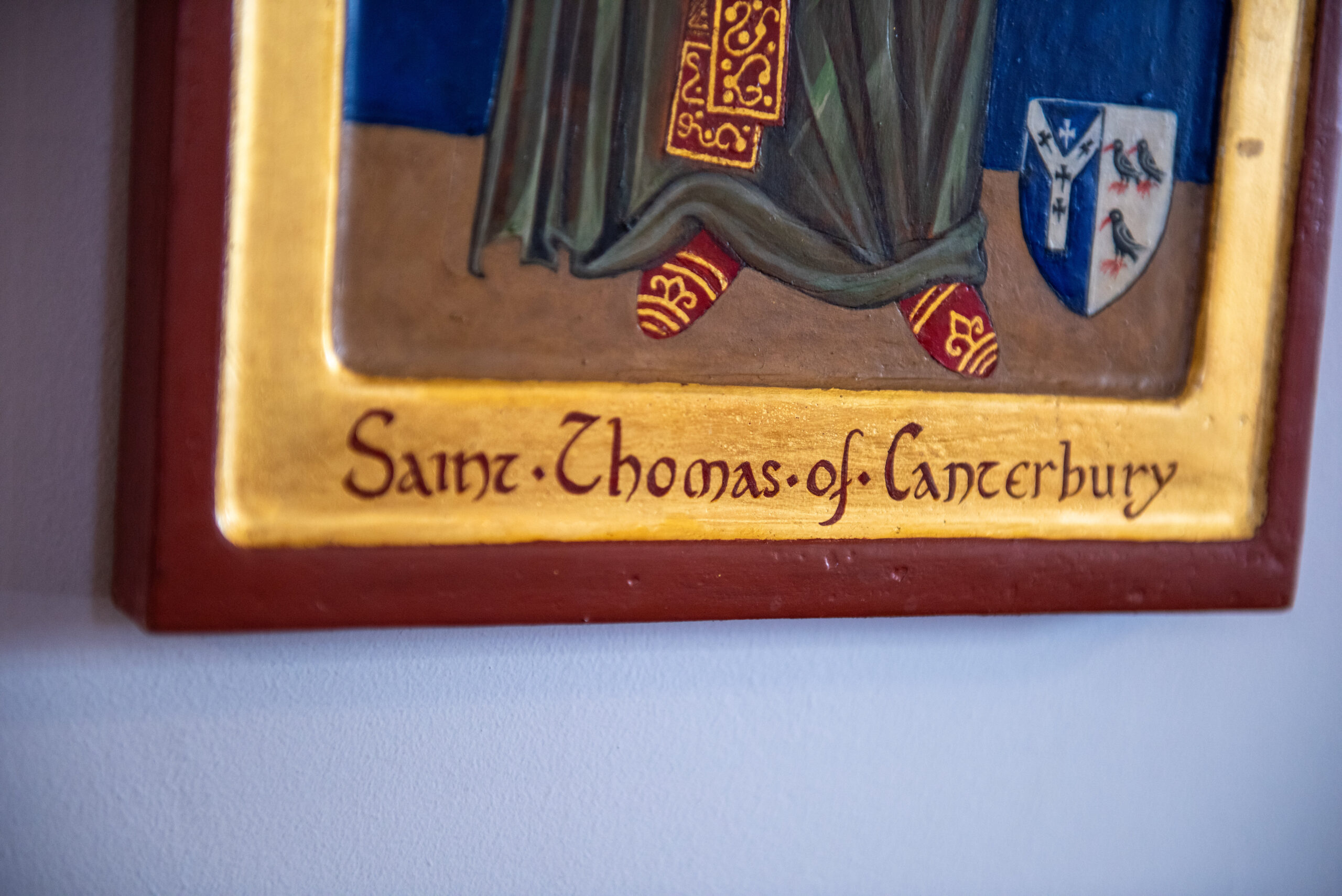
Feast Day – 29 December
Thomas Becket, Archbishop of Canterbury, was killed in December 1170. Becket’s death remains one of the most famous stories associated with Medieval England.
The Power of the Church in Medieval England
In Medieval England the Church was all powerful. The fear of going to Hell was very real and people were told that only the Catholic Church could save your soul so that you could go to Heaven. The head of the Catholic Church was the pope based in Rome. The most important position in the church in Medieval England was the Archbishop of Canterbury and both he and the king usually worked together.
A king of England could not remove a pope from his position but popes claimed that they could remove a king by excommunicating him – this meant that the king’s soul was condemned to Hell and people then had the right to disobey the king.
For people in England , there was always the real problem – do you obey the king or the pope? In fact, this was rarely a problem as both kings and popes tended to act together as both wanted to remain powerful. On two occasions they fell out – one involved the Archbishop of Canterbury, Thomas Becket, and the other Henry VIII.

Thomas Becket and Henry II
In 1162, Henry II, king of England, appointed Thomas Becket, as Archbishop of Canterbury. This was the most important religious position in England. No-one was surprised by Henry’s choice as both he and Thomas were very good friends. They enjoyed hunting, playing jokes and socialising together. Becket was known to be a lover of wine and a good horse rider. Henry II loved to ride as well but his personality was troubled by his fearsome temper. He tried to keep his temper under control by working very hard as it distracted him from things that might sparked off his temper.
Henry II also controlled a lot of France at this time. William the Conqueror had been his great-grandfather and he had inherited his French territories as a result of this. When Henry was in France sorting out problems there, he left Becket in charge of England – such was his trust in him. Becket became Henry’s chancellor – the most important position in England after the king.
When the Archbishop of Canterbury died in 1162, Henry saw the chance to give his close friend even more power by appointing him Archbishop of Canterbury – the most important church position in England. Why would Henry do this ?
Church vs. Royal Authority
In Henry’s reign, the Church had its own courts and any member of the Church could decide to be tried in a Church court rather than a royal court. Church courts usually gave out easier punishments to churchmen who had done wrong. Henry believed that this undermined his authority. As king, he was concerned that England was becoming too lawless – there was too much crime. He believed that Church courts did not set a good example as they were too soft on offenders. For example, a royal court would blind or cut off the hand of a thief; a Church court might send a thief on a pilgrimage.
Henry hoped that by appointing his good friend Becket, he might have more of a say in how the Church punished offenders. He hoped that Becket would do as he wished and toughen up the sentences passed out by Church courts.
Becket did not want the job. As chancellor, he was as powerful as he wished to be. He also had an excellent relationship with Henry, and he did not want to spoil this. In fact, on being offered the post, Becket wrote to Henry that “our friendship will turn to hate.” However, Henry persuaded Becket and he agreed in 1162 to the appointment. His letter was indeed to become prophetic.
The Breaking Point
The post of Archbishop changed Becket. He dropped his luxurious lifestyle; he ate bread and drank water, he had a luxury bed but preferred to sleep on the floor; he wore the rich clothes of an archbishop, but underneath the fine tunics he wore a horse hair shirt – very itchy and unpleasant to wear. He gave his expensive food to the poor.
In 1164, the first sign of a split between Henry and Thomas occurred. Henry passed a law which stated that any person found guilty in a Church court would be punished by a royal court. Becket refused to agree to this, and knowing of Henry’s temper, he fled abroad for his own safety.
It took six years before Becket felt safe enough to return to England. However, they quickly fell out again when Becket asked the pope to excommunicate the Archbishop of York who had taken sides with the king. This was a very serious request and a very serious punishment for someone who could claim that he was only being loyal to the king. Henry was furious when he found out what Becket had done. He is said to have shouted out “will no-one rid me of this troublesome priest ?” Four knights heard what Henry had shouted and took it to mean that the king wanted Becket dead. They rode to Canterbury to carry out the deed. The knights were Reginald FitzUrse, William de Tracey, Hugh de Morville and Richard le Breton. On December 29th 1170 they killed Becket in Canterbury Cathedral. After killing him, one of the knights said “Let us away. He will rise no more.”
Becket’s Legacy and Shrine
Becket’s body was still on the cathedral floor when people from Canterbury came in and tore off pieces of his clothes and then dipped these pieces in his blood. They believed that they would bring them luck and keep evil away.
Where Becket died quickly became a place of pilgrimage. The pope quickly made him a saint. Henry II asked the pope for forgiveness and he walked bare foot to Canterbury to pray at the spot where Becket was killed. Monks whipped him while he prayed.

People left valuables at the spot of his death. It became a shrine to him and people claimed that a visit to the shrine left them free of illness and disease. No-one dared to touch the valuables there until Henry VIII shut down the monasteries and churches and took away any valuables he wanted. It took 21 carts to remove the valuables from Becket’s shrine at Canterbury Cathedral.
